Urban farmers and gardeners around the world transform abandoned lots into edible landscapes, improving human and ecological health as well as creating beautiful places. Richard Ingersoll surveys a myriad of concepts and projects from around Europe and the United States.
Eat the City: The Art of Urban Farming
Essay By Richard Ingersoll, Originally Published in The Design Observer
Urban development during the past half century has eaten away the clear edges of cities, leaving ambiguous empty spaces. While the resulting disorderly appearance betrays the expectations of coherent urban morphology, I have come to realize that one must have compassion for such patchy areas. They are part of the lived experience of at least half of humanity and for this deserve attention as spots of potential quality. The essayist Philip Lopate, who, like myself, spent several years in academic exile in Houston, described that sprawling city as “a smiling face with a lot of teeth missing.”
European cities tend not to have the same dental mishaps, at least not in their historic centers, but on the periphery the fabric of streets and buildings starts to fray and begins to look more like suburban Texas, more like the global condition of sprawl. Here infrastructure prevails over buildings, and areas historically reserved for growing food get bullied by new constructions, torn to pieces by fast roads and parking lots, and splintered into useless gaps overgrown with weeds. These leftover spaces — which belong neither to a natural ecosystem nor to a landscape design — fit Gilles Clément’s provocative theory of the “Third Landscape.” [1] While they may contradict the aesthetic sensibilities of landscape professionals, such untended sites represent for Clément an important evolutionary habitat as a “refuge of biodiversity.”
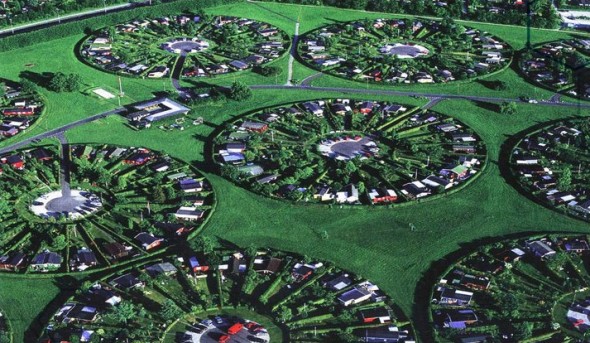

Urban farmers and gardeners around the world are identifying abandoned lots and recovering them as edible landscapes. The benefits are well established: land recuperation with few maintenance costs; heightened security fostered by citizen-gardeners who take responsibility for their places of cultivation; improved health, thanks to the physical activity of gardening as well as the consumption of safe, biologically superior local produce. — Richard Ingersoll
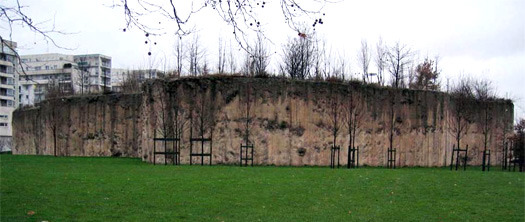

Filling the Gaps in the Urban Fabric
Perhaps when we are confronted by a gap in the urban fabric, rather than thinking about how to fill it, or correct it, our first instinct should be to investigate its potential as a Third Landscape. What species of flora and fauna have survived here? Does it already have a formal character? When Clément’s Manifesto of the Third Landscape was published in 2004, it seemed a perverse invitation to indolence, to letting things go, so contrary to the ambitious reshaping of the land that animates the design professions. The danger of his theory was that it could be read as condoning the urban decay of sprawl. That indolent spirit fortified Clément’s extraordinary Isle Derborence, in Lille, a man-made butte occupying an area of 3,500 square meters that rises sharply from the flat lawns of the Parc Henri Matisse to a height of 7 meters. Completed in 1992, the inaccessible landscape achieves poetic status as a marvelous conceit, replicating the desert Island of Antipodes, south of New Zealand, in its extruded, irregular shape. After two decades, this “unnatural” island, now capped by tall trees, has produced an autonomous ecosystem, inviolable by humans, and a superb asylum for birds in the center of the city.
A similar, though much smaller, sanctuary in New York City anticipated Clément’s call to inaction. In 1978, the artist Alan Sonfist erected a cast-iron fence around an empty lot owned by New York University, marking the site off-bounds in perpetuity. His conceptual artwork, Time Landscape, sits amid the dense blocks of Lower Manhattan on a standard-size lot, 25 by 40 feet, seeded with a hierarchy of autochthonous species, ranging from low grasses to saplings and fruit trees to taller oaks and elms, that represent the island’s ecology before settlement. While Clément’s Isle has acquired a monumental presence in Lille, Time Landscape usually goes unnoticed, like a leftover scrap of land too small for an entrepreneur’s attention.
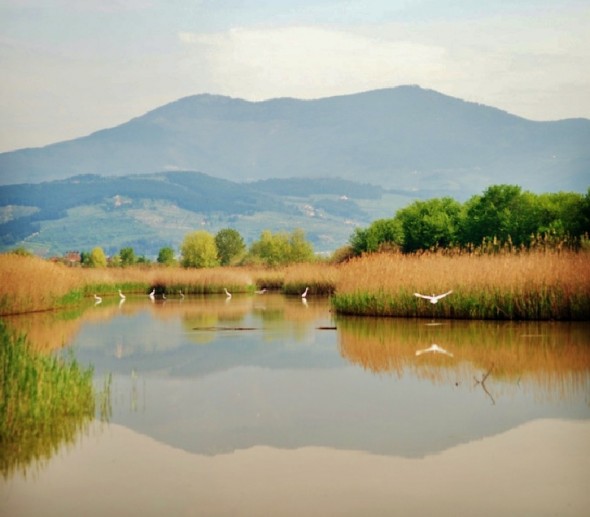

A Suburban Galapagos
A much more ambitious example of the art of leaving things alone can be found in the suburbs of Florence at the Oasis of Focognano. This reconstituted wetland and wildlife preserve occupies an unlikely position between a ziggurat-shaped hill, once the city’s dump, and the Firenze Nord entrance to the Autostrada. Not far from it spread the concrete warehouses of fashion companies like Gucci and Roberto Cavalli, horizontal boxes separated by vast parking lots. Biologist Carlo Scoccianti, backed by the World Wildlife Foundation and the municipality of Campi Bisenzio, acquired 63 hectares of land, and in the late 1990s began to reshape the site into a series of small lakes. Renaturalized with reeds, canes and other native grasses, the fenced-off site has become a sort of suburban Galapagos, full of fascinating rare species, now safe from hunters and urban intrusions. Visitors must be accompanied by a trained volunteer guide and maintain total silence. Funding came from environmental compensations exacted from local enterprises by the river authority, which needed to build catchment basins to mitigate floods. Scoccianti promotes the project as a work of art (see his website “Artlands”) that involves human design actions to be developed by nature itself. [2]
Each of these landscapes is now deliberately unmaintained, but they initially required complex site preparation and selective planting. While they may appear like wilderness, they are highly artificial products of design. As such, they are not far removed from the “Second Landscape” maintained by farmers and gardeners. I bring up these examples in order to suggest a vision for designers and activists working in that second space. For despite the appeal of Third Landscape artworks, it seems unrealistic to apply strategies of programmed abandon to the innumerable gaps left by urban sprawl. I sympathize with Christophe Girot, who writes: “A scruffy nature left to grow unattended at the edge of some old brownfield site does not convey the same positive sensual emotion as a vertical garden (i.e., Patrick Blanc’s very unnatural hydroponic planting of walls), despite all its inherent ecological merits.” [3]
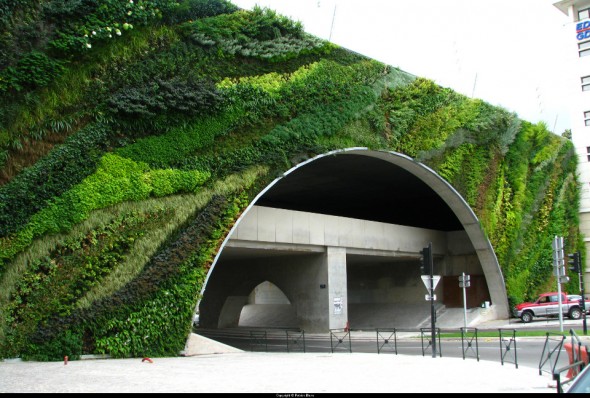

Agricivismo: A Movement Toward Agricultural Urbanism
For the last decade I have advocated an alternative approach to landscape in urban environments that I call Agricivismo, roughly translated as Civic Agriculture. [4] All cities, even the densest ones like New York (which supposedly has 700 community gardens), have the potential to be reconceptualized as agricultural zones, supplying many different scales and genres of food production. Urban farmers and gardeners around the world are identifying abandoned lots and recovering them as edible landscapes. While I have yet to find examples of agricultural interventions that possess the majesty of the Isle Derborence or the grandeur of the lakes of Focognana, I believe vegetable patches and productive farms in urban situations can aspire to that level of art. The benefits are well established: land recuperation with few maintenance costs; heightened security fostered by citizen-gardeners who take responsibility for their places of cultivation; improved health, thanks to the physical activity of gardening as well as the consumption of safe, biologically superior local produce.
Agriculture played a central role in pre-industrial cities and continued to serve industrial cities through the Second World War — as the famous Birmingham allotments attest — before the hegemony of oil-powered agriculture and the pressures of real estate speculation banished food production ever farther from the urban core. In suburban California, where I grew up, I never saw a live chicken or a vine-grown tomato. Globalization has further alienated consumers from their food, but lately there has been a shift back toward urban farming, due partly to a growing ecological consciousness and partly to economic necessity. The long recession has decreased the value of urban land and opened new possibilities for urban agriculture. Detroit, which in the late 20th century lost more than half of its population, has welcomed farming initiatives on its vacant lots. Agriculture in some cases can increase the value of land. In the Bordeaux suburb of Pessac, famous among architects for Le Corbusier’s intervention for workers’ housing, the cost of land for growing wine grapes currently runs higher than that for building development, which has helped to conserve urban land. Specialty crops in other urban contexts may keep land out of the development market.
Another major initiative was launched at the 2010 Internazionale Bauaustellung, held in seven cities of the former East Germany that have been losing population since 1989. IBA planners proposed removing superfluous Plattenbauen housing and creating better urban connections through allotment gardens. Their seemingly contradictory slogan — “Progress without growth” — launched a profound challenge to the design professions. But despite new networks of orchards and grazing lands in places like the Paunsdorf Siedlung, on the outskirts of Leipzig, the IBA proposal attracted scarce attention: it failed to address an aesthetic agenda that could spur the collective imagination.


Agriculture, Art and Society Converge
While urban farming should not be reduced to a question of aesthetics, I believe planners and activists give too little thought to creating a meaningful landscape. Tending an urban orchard should be about more than subsistence farming. Yes, you can grow food in the city, but farming within the public realm begs for art. I always return to the finest example ever built, the Nærum allotments north of Copenhagen. In 1948, landscape architect Carl Theodor Sørensen (1899-1979) designed 50 allotments, enclosing each 500 square-meter lot within an elliptical hedge of hawthorn and privet. The two-meter interstices separating the ovals remained for public use, while each allotment had its own tool shed and could be organized as the individual tenant desired. Within the hedges, the gardens acquired their own character according to the tastes of each gardener, but the grassy intermediary public areas, conditioned by the uniform, head-high pruning of the hedges, enforced a strong formal unity for the site that resonated with traditional oval constructions in the region. Nærum remains after more than 60 years a stunning public park maintained by 50 private gardeners.
I focus on the scale of the allotment for two reasons: 1) a regional agricultural park, which would be desirable for all cities, requires herculean bureaucratic and political organization to negotiate and sustain; and 2) I am more confident of the unconditional participation of small scale gardeners. Several Mediterranean cities, including Pamplona, Milan and Barcelona, have initiated regional agricultural parks, attempting to bring public access and awareness to areas within the metropolitan urban system where traditional agriculture is still practiced. Pamplona’s Aranzadi Park, designed by Aldayjover Arquitectos, is the smallest and the most coherent, a network of bicycle paths linking a variety of cultural and farming activities, including an ancient pilgrim’s bridge and the bullpens that supply the famous corrida.


Milan hosts Europe’s first agricultural park, the Parco Agricolo Sud, first conceived at the Polytechnic University in the late 1970s. Design professionals analyzed the geographic and hydrological resources of the region, cataloguing the location and scale of farming activities. The 46,000-hectare park gained official recognition in 1990 under the aegis of the Province of Milan, involving 63 municipalities and more than 1,400 farms. But its existence remains a mystery to the broader public. With the exception of a well-organized public park, the Bosco in Città, it is difficult to know how to visit the larger Parco Agricolo, or even how to locate it, and real estate pressures are a constant threat.
Barcelona’s agricultural park derived directly from Milan’s example and shares similar problems: multiple authorities and limited accessibility. Occasionally one finds a sign in the towns near the Llobregat River, claiming that land belongs to the park, but most areas within its jurisdiction are not connected or accessible. The likely places to begin creating links are the water courses, streams and canals, which legally are protected as fluvial parks. The examples of Pamplona, Milan and Barcelona do not lessen my belief that all cities should declare their edges part of an agricultural park, but they demonstrate the difficulty of managing design processes and outcomes at the regional scale.
Urban Agricultural Allotments
Allotments, by contrast, have fewer intermediaries: the municipal government, citizen groups, and sometimes private businesses. They can serve individual families, as at Nærum, or can include educational institutions, botanical societies, hospitals and prisons, and ecological testing grounds. In 2010, the small German city of Andernach decided to plant public lands surrounding the town castle with vegetables that citizens were invited to pick and take home. Municipal staff tend the garden, and townspeople do the harvesting; they can literally eat their way through the city. Elsewhere, school gardens provide proven benefits to education, but they typically require professional care when students are away for the summer. One of the most successful school projects, “East New York Farms!”, was organized in 1998 by professors from the Pratt Institute. Set in an economically disadvantaged neighborhood, the program took over empty lots and paid a small stipend to children aged 12-14 who gardened a few hours a week. The transformation of both the lots and the children was astounding, leading to the establishment of a Farmers Market and launching several careers in urban farming.
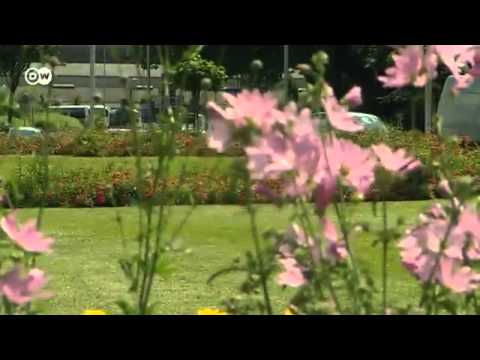
Watch this video on YouTube
Andernach, Germany, residents create a community garden | People & Politics
Germany has the greatest number of allotment gardens per capita in the world, and in many German cities, in particular Münich and Berlin, the demand far exceeds the supply. Associations have developed, such as Nomadisch Grün (Nomadic Green), which pursues a strategy of mobile gardening. In 2009, founders Marco Clausen and Robert Shaw created Prinzessinnengärten on a derelict site in Kreuzberg, Berlin, assembling stacks of plastic beer crates, vinyl gunny sacks and cardboard milk cartons, and filling them with topsoil. It was conceived as a temporary garden, but now a group of 40 volunteers participates in these mobile landscape transformations, bringing the portable planters inside the local market hall for the winter. The project has generated a restaurant using food grown on the site and attracts continuous cultural events. [5] These nomadic tactics inspired a spinoff when dozens of people occupied the abandoned runways of Berlin’s Templehof Airport with spontaneous gardens. Mobile gardening has been taken to an even further extreme by American filmmaker Ian Cheney, who in 2009 parked his pickup truck on Manhattan streets and filled the back with soil to create a “Farm on Wheels.” It has inspired a fleet of 25 similar “Truckfarms.” [6]
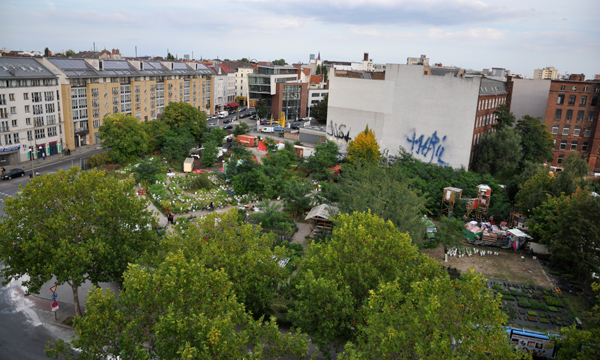

Allotments enrich urban sites socially and environmentally and can happen almost anywhere, as Michelle Obama proved in 2009, when she dug up 100 square meters of the White House lawn for the “First Garden.” In May 2012, with my colleague Marta Donati, an agronomist who works on therapy gardens with ex-drug addicts, I prepared a nomad garden in a medieval cloister in Montevarchi, in the Province of Arezzo, Italy, as part of an arts program devoted to greening the city. Since it was a historic site that could not be altered, we designed a garden made completely of portable elements. We gave it formal structure with a pergola of bamboo using a 9-square grid, which allowed for eight chambers for different horticultural types surrounding a central void, and positioned many of the plants at a height of one meter so they could be observed or touched by children or people in wheelchairs.
Visitors entered on a path through cut broom, and in the second room rose a column of laurel leaves, symbolic of the residue of nature gathered and allowed to decompose. The third room displayed crates (an idea borrowed from the Prinzessinnengärten) with seasonal vegetable and grain seedlings. The fourth room housed an exotic ficus set in a pyramid of bamboo poles. The fifth was lined with gunny sacks stuffed with soil and planted with aromatic herbs (a practice copied from the ghetto of Mathare in Nairobi). The sixth room had a bench for resting and a hibachi grill. The seventh offered a spiral of cabbage seedlings watered by an upturned demijohn and a slow-drip hose, loosely inspired by Smithson’s Spiral Jetty. The final room set up a bed covered with carnations, literally a flower bed. The Nomad Garden cost 67€, took four volunteers six hours to build, and thrived in the cloister for three weeks without causing damage to the place.
Allotments can be made almost anywhere, and they do not need to be permanent. A display of growing plants, made accessible to all and cared for by conscientious gardeners, provides an alternative to sterile development and derelict spaces and offers a vision of hope for the city.
Richard Ingersoll earned a Ph.D. in Architectural History at UC Berkeley and has taught at Rice University, ETH Zürich, and since 1997 at Syracuse University in Florence. He recently published World Architecture, a Cross-Cultural History (Oxford University Press, 2013), a revision of Spiro Kostof’s History of Architecture (1985). In his book Sprawltown, Looking for the City on its Edges ( Princeton Architectural Press, 2006; first published in Italian as Sprawltown, cercando la città in periferia, Roma, 2004) he first proposed the notion of Agricivismo as a means of mitigating the effects of sprawl.
Notes
1. Gilles Clément, Manifeste du Tiers paysae (Paris: Editions Sujet/Objet, 2004).
2. Carlo Scoccianti, Ricostruite reti ecologiche nelle pianure. Strategie e tecniche per progettare nuove zone umide nelle casse di espansione. Dieci interventi a confronto nel bacino dell’Arno (Firenze: Autorità di Bacino del Fiume Arno, 2006).
3. Christophe Girot, “The Shifting Meaning of Nature in the City,” in Annette Becker and Peter Cachola Schmal, Eds., Stadtgrün, Europäische Landschaftsarchitecktur für dea 21. Jahrhundert (Schmal, Basel: Birkhauser, 2010), 221.
4. See Barbara Fucci, Richard Ingersoll, and Monica Sassatelli, Agricoltura Urbana, dagli orti spontanei all’Agricivismo per la riqualificazione del paesaggio perturbano (Bologna: Regione Emilia-Romagna, 2008); and Richard Ingersoll, “Agricivismo come terapia per la città diffusa,” in Ed. Guido Borelli, La città: bisogni, desideri, diritti. La governance urbana (Bologna: Franco Angeli, 2009).
5. Richard Ingersoll, “Urban Agriculture,” Lotus 149 (2012): 74.
6. Cathy Lang Ho, “Spontaneous Interventions, US Pavilion, 13th Architecture Biennale of Venice,” Architect, Sept. 2013.
Updated 5 August 2023



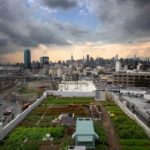


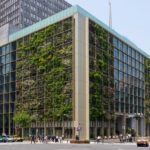






Interessante
Pingback: Open Voices News Roundup: July 8 - Nature Sacred
Pingback: Chicago Urban Farming | WilderUtopia.com
Pingback: Convivial Degrowth: An Ecologic Reckoning for an Ailing Planet | WilderUtopia.com
Pingback: Japan: "Office Farming" Greens Tokyo's Urban Jungle | WilderUtopia.com
Pingback: A Farm Grows in LA: Urban Farming with Avenue 33
Pingback: Tribute to the Late Urban History Provocateur Mike Davis - WilderUtopia